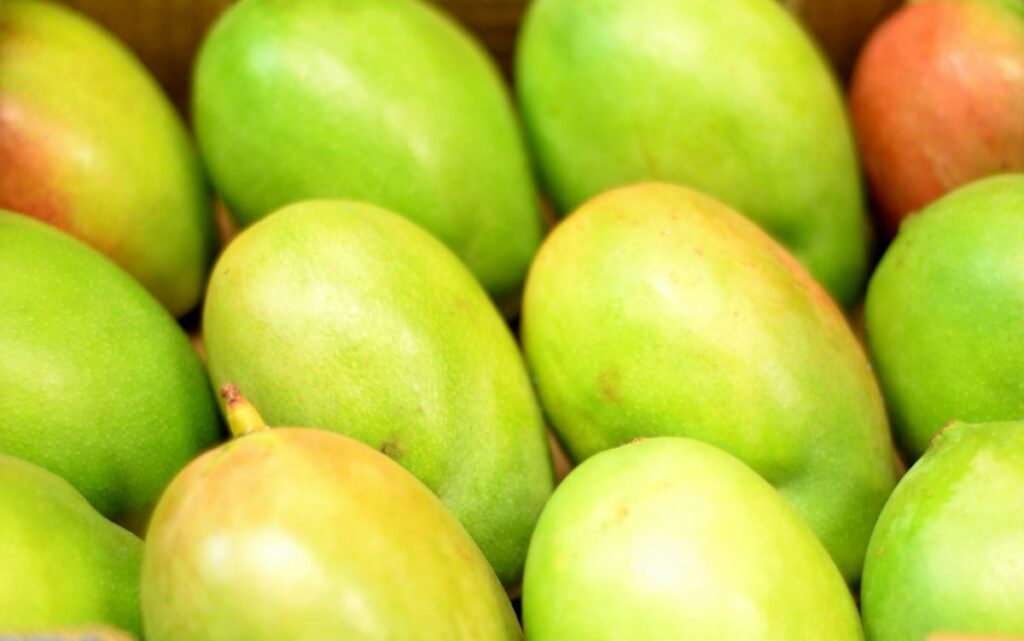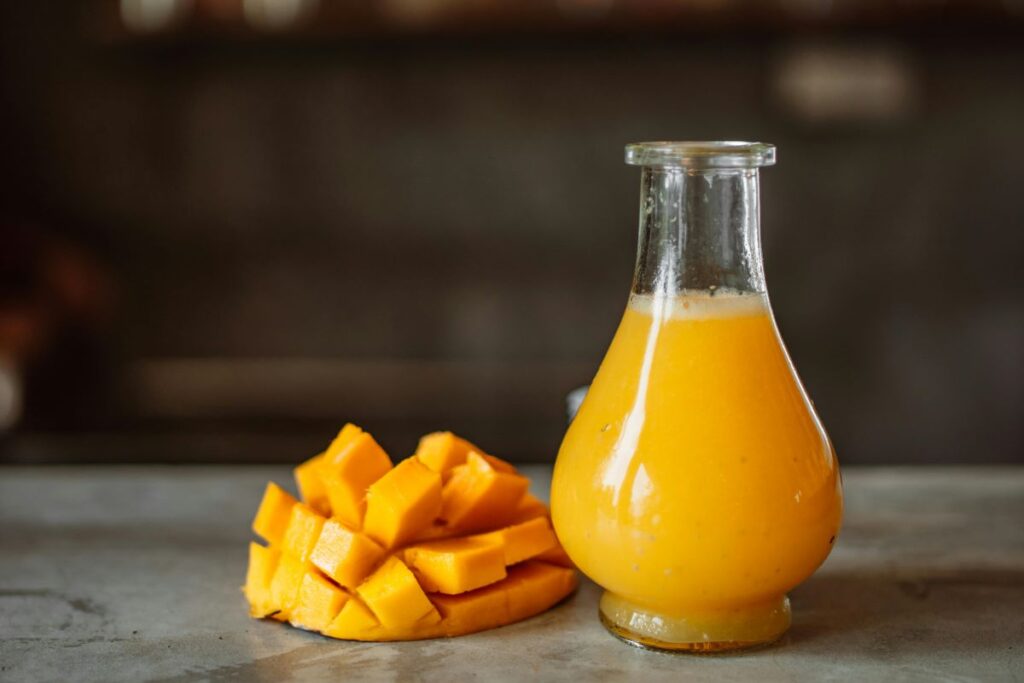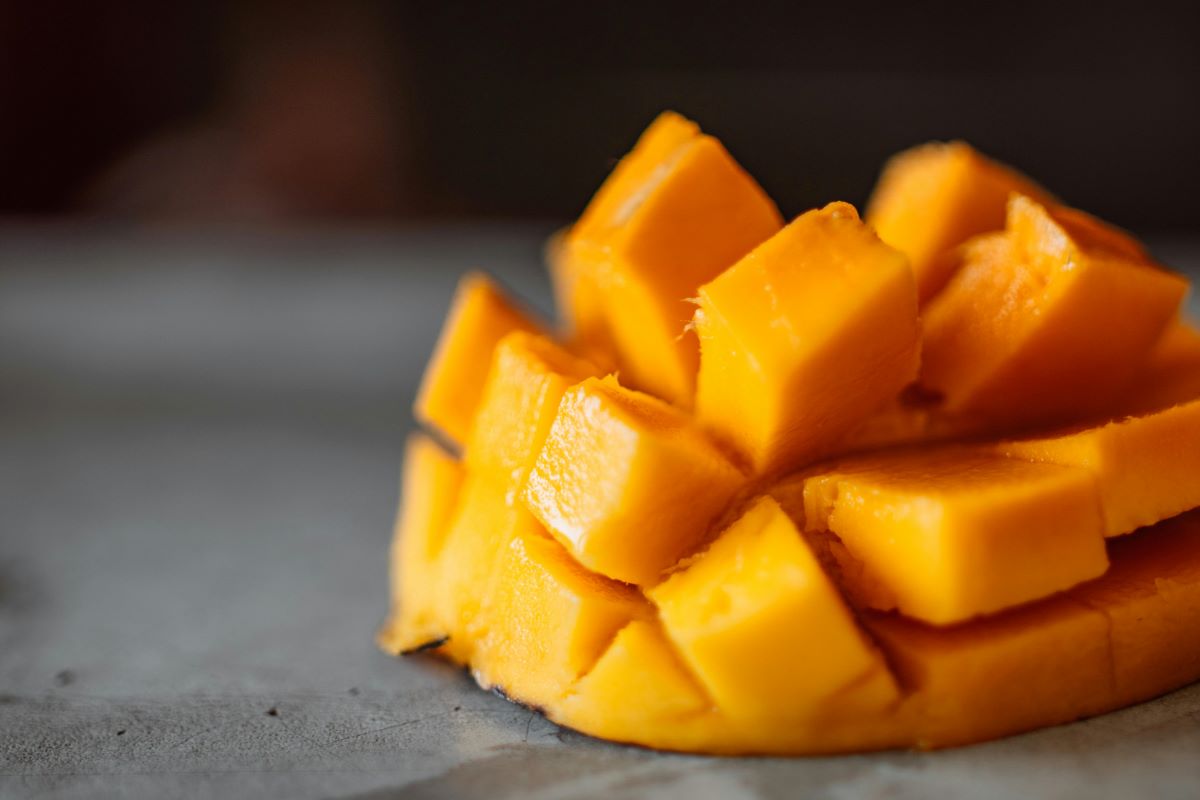Imagine holding a ripe mango in your hands. Its golden skin glows under the light, and a sweet, tropical scent fills the air. You press it gently—just the right amount of softness. The anticipation builds. But now comes the big question: How do you eat it?
Eating a mango isn’t just about biting into a piece of fruit—it’s an experience. From choosing the perfect one to savoring its juicy goodness, every step is filled with joy. Whether you slice it like a pro, scoop it with a spoon, or dive in with your hands, there’s no wrong way—only delicious possibilities.
Ready to unlock the magic of mangoes? Let’s take a bite into this sweet adventure!
Table of Contents
Why Mangoes Matter

Mangoes bring joy. They taste like sunshine. People all over the world love mangoes for good reason. They offer more than just good taste. They connect us to nature, to other cultures, and to simple pleasures.
I first fell in love with mangoes as a child. My mother showed me how to pick the perfect one. “Look for a blush of red,” she would say. “And smell it. A good mango tells you it’s ready.”
Also read,
- Can You Eat Mango Skin? The Complete Truth About Mango Peels.
- How to Tell if a Mango is Ripe: The Complete Guide.
- How to Make Mango Sticky Rice: A Thai Dessert to Delight Your Senses.
Finding the Perfect Mango

The first step in eating a mango is choosing a good one. Not all mangoes are the same—some are sweet, while others are tart. Certain varieties have smooth flesh, whereas others contain more fiber.
Types of Mangoes
Let’s look at some types you might find:
Alphonso mangoes come from India. Many call them the king of mangoes. They have a deep yellow flesh and sweet taste.
Kent mangoes grow large. They have a dark green skin with a red blush. The flesh stays firm even when ripe.
Ataulfo mangoes (also called honey mangoes) are small. They have yellow skin and flesh with no strings. They taste very sweet.
Tommy Atkins mangoes show up most in U.S. stores. They have a red and green skin. They last long but have more fiber.
Signs of Ripeness
How do you know when a mango is ready to eat? Use your senses.
Look at the color. Most mangoes turn from green to yellow, orange, or red when ripe. The exact color depends on the type.
Feel the mango gently. A ripe mango gives slightly when you press it. It feels like pressing your thumb into the flesh at the base of your other thumb. Too soft means it’s past its prime. Too hard means it needs more time.
Smell the stem end. A ripe mango smells sweet and fruity. No smell often means no flavor.
Ways to Ripen a Mango
Did you buy a hard mango? No need to worry. You can ripen it at home.
Put the mango in a paper bag. Close the bag loosely. Leave it on your counter at room heat. The mango will ripen in 1-2 days. The paper bag traps ethylene gas that the fruit gives off. This gas speeds up ripening.
Want to speed things up even more? Add a banana or apple to the bag. These fruits also give off ethylene gas.
Want to slow down ripening? Put the mango in your fridge. Cold slows the ripening process.
Tools You Might Need
You can eat a mango with just your hands and mouth. But some tools make the job easier.
- A sharp knife helps cut the mango safely. A dull knife might slip and cut you instead.
- A cutting board gives you a safe surface for cutting.
- A spoon helps scoop out the flesh from the skin.
- A bowl catches the juice that will run down your hands.
- Paper towels or napkins clean up the mess. Eating a mango can get sticky!
The Classic Ways to Cut a Mango

Now for the main event: cutting and eating the mango. I’ll share several ways to do this.
The Hedgehog Method
This method looks fancy but works well.
- Stand the mango on your cutting board with the stem end down.
- Find the flat sides of the mango. The pit runs down the middle, so you’ll cut along both sides of it.
- Cut down one side of the pit. Repeat on the other side. You now have two “cheeks” and the middle section with the pit.
- Take one cheek. Without cutting through the skin, cut a grid pattern into the flesh.
- Push the skin side so the cuts open up. This creates the “hedgehog” look.
- Use a spoon to scoop the cubes off the skin. Or eat them right off the skin.
This method gives you neat cubes of mango. It works best with firmer, riper mangoes.
The Spoon Scoop Method
This works well for very ripe, soft mangoes.
- Cut the mango in half around the pit as in the hedgehog method.
- Take one half of the mango.
- Slide a spoon between the flesh and the skin.
- Move the spoon along the skin, scooping out the flesh in one piece.
- Repeat with the other half.
You’ll end up with two mango halves free from their skin. You can then slice or dice them as you wish.
The Glass Method
This trick makes quick work of mango halves.
- Cut the mango in half around the pit.
- Take one half and place the edge of the cut side on the rim of a drinking glass.
- Push the mango half down into the glass. The rim will separate the flesh from the skin.
- The flesh falls into the glass while the skin stays in your hand.
- Repeat with the other half.
This method works well but can be messy with very ripe mangoes. The juice might run down the outside of the glass.
The Mango Fork
In parts of Mexico and Southeast Asia, people use a special tool: the mango fork. This metal fork has a guard that sits against the skin. You twist it into the mango and pull out the flesh.
If you eat mangoes often, this tool might be worth buying. It makes quick work of eating a mango without cutting it.
Don’t Waste the Middle
After cutting off the cheeks, you still have the middle section with the pit. Don’t throw this part away! It holds some of the sweetest flesh.
Try these ways to enjoy the middle part:
- Cut off the skin with your knife. Then scrape off bits of flesh with your teeth. This gets messy but tastes great.
- Cut off any flesh you can see, leaving the pit bare. Add these pieces to your mango pile.
Some people even suck on the pit to get the last bits of flavor. Just be careful of the fine fibers that can get stuck in your teeth.
The No-Knife Method
What if you have no knife? You can still enjoy a mango.
Wash the mango well. Roll it firmly on a hard surface to soften the flesh inside without breaking the skin.
Bite a small hole in one end of the mango. Make the hole big enough to suck out the flesh.
Squeeze the mango gently while sucking out the flesh through the hole. The inside turns to pulp that you can drink.
This method gets very messy but works in a pinch. Kids often love eating mangoes this way.
Creative Ways to Eat Mangoes
Beyond just cutting and eating, mangoes offer endless ways to enjoy them.
Mango with Salt and Chili
In many parts of Latin America and Asia, people add salt and chili to mango. The salt brings out the sweetness. The chili adds a kick that works well with the mango’s flavor.
Try sprinkling your mango with a mix of salt, chili powder, and a squeeze of lime juice. The mix of sweet, salty, spicy, and sour will wake up your taste buds.
Mango with Sticky Rice
In Thailand, people serve ripe mango with sticky rice and coconut milk. The rice soaks up the coconut milk. The mango adds freshness and sweetness.
To try this at home, cook glutinous rice. Mix it with coconut milk and a bit of sugar. Serve with sliced ripe mango on top.
Mango Lassi
In India, people blend mango with yogurt to make lassi. This drink tastes both sweet and tangy.
To make it, blend ripe mango chunks with plain yogurt, a touch of sugar, and a hint of cardamom. Add ice for a cool treat.
Storing Cut Mango
What if you can’t eat all your mango at once? You can store the rest.
Put cut mango pieces in a covered container. Keep them in your fridge for up to three days. The mango might get softer and release more juice as it sits.
Want to keep mango longer? Freeze it. Lay the pieces on a baking sheet so they don’t touch. Freeze until solid. Then transfer to a freezer bag. Frozen mango keeps for months. It works great in smoothies.
The Health Benefits of Mangoes

While we focus on how to eat mangoes, let’s not forget why we should eat them.
Mangoes pack a lot of vitamin C. One mango gives you all the vitamin C you need for a day. This helps your immune system.
They also offer vitamin A, which helps your eyes and skin stay healthy.
Mangoes have fiber that helps your digestion. They contain plant compounds that may fight cancer and heart disease.
But mangoes also have sugar. One medium mango has about 45 grams of sugar. If you watch your sugar intake, enjoy mangoes in small amounts.
Mango Etiquette
In many cultures, the mango holds a special place. In Bangladesh, it is sometimes given as a gift at special events. Meanwhile, in the Philippines, offering a mango can symbolize friendship.
When eating mangoes in social settings, watch how others do it. In formal settings, people often use forks and knives. At casual events, eating with your hands might be fine.
Always have napkins ready. Mango juice can stain clothes. If eating with others, warn them if juice starts to drip.
Common Questions About Eating Mangoes

People often ask these questions about mangoes.
Can you eat mango skin?
You can, but most people don’t. The skin has a bitter taste and tough texture. Some people have allergic reactions to mango skin. The skin contains urushiol, the same compound found in poison ivy. If you get a rash from poison ivy, you might react to mango skin too.
How do you know when a mango has gone bad?
A bad mango shows clear signs. It may have large black spots. It might smell sour instead of sweet. The flesh might look gray or brown instead of yellow or orange. When in doubt, don’t eat it.
Can you eat an unripe mango?
Yes, but it tastes very different. Unripe mangoes taste sour and have a firm texture. In many Asian cuisines, people use green mangoes in salads and pickles. They grate or slice the firm flesh thin and add salt, chili, and lime.
Mango Across Cultures
The mango tells a story of human history. Native to South Asia, mangoes spread across the world through trade and travel.
In India, mangoes have grown for over 4,000 years. People mention them in ancient Sanskrit texts. The Buddha himself sat in mango groves to meditate.
Arab traders brought mangoes to East Africa. Portuguese explorers took them to Brazil and the West Indies. Today, mangoes grow in most tropical areas of the world.
Each culture has its own mango customs. In Mexico, vendors sell mangoes on sticks, carved into flower shapes. In the Philippines, people enjoy green mangoes dipped in shrimp paste as a popular snack. Meanwhile, in Jamaica, children climb wild mango trees to pick the fruit.
Growing Your Own Mango Tree
If you live in a warm climate, you might try growing a mango tree. Even in cooler areas, you can grow dwarf varieties in pots.
To grow a tree from a seed, clean all flesh from the pit. Plant it in soil with the thinner edge just showing above the surface. Keep the soil moist but not wet.
Be patient. Mango trees from seeds can take 5-8 years to bear fruit. Trees from grafted saplings fruit sooner, often in 3-5 years.
A mature mango tree needs full sun and well-drained soil. It can grow quite large, up to 100 feet tall for some varieties. Dwarf varieties stay under 20 feet.
The Joy of Sharing Mangoes
Some joys grow when shared. Mangoes belong in this group. Cutting up a ripe mango for friends or family creates a moment of connection.
I remember summer days with my cousins. We would sit in a circle, each with a mango. The race would begin. Who could eat their mango the fastest? Who would get the most juice on their shirt? These simple games built bonds that last to this day.
Try sharing mangoes with children. Their faces light up at the sweet taste. The messy eating becomes part of the fun.
Final Thoughts
The mango teaches us to slow down. To use our senses. To enjoy the moment.
In our busy world, taking time to cut and eat a mango by hand connects us to our food in a way few other fruits can. The process asks for our full attention. It rewards us with a taste of pure joy.
So next time you hold a ripe mango, take a moment. Feel its weight. Smell its sweetness. Then cut into it, knowing you take part in a ritual enjoyed across continents and throughout human history.
The mango offers more than just food. It gives an experience. From the first cut to the last sticky finger lick, eating a mango engages all your senses. It reminds us that some of life’s greatest pleasures come from the simplest things.
Now go find a ripe mango and enjoy it. Your taste buds will thank you.


I appreciate the effort that goes into creating high-quality content, and this post was no exception. The insights and information were top-notch and made for a really engaging read. Keep up the great work!